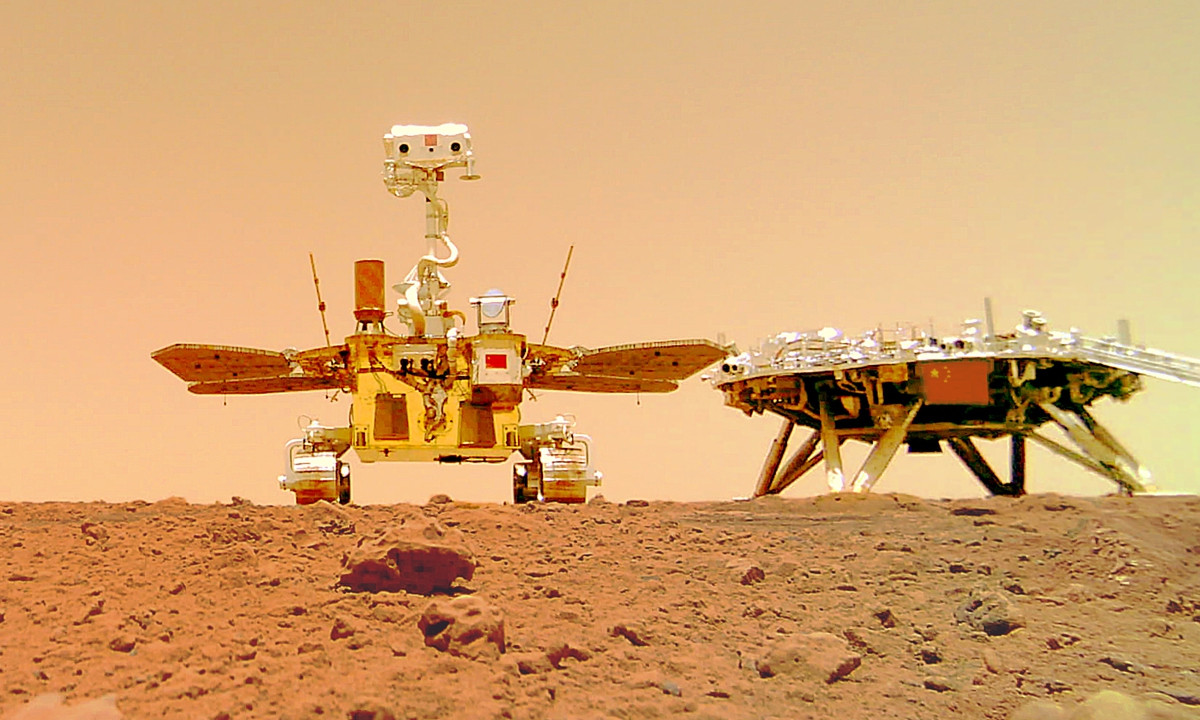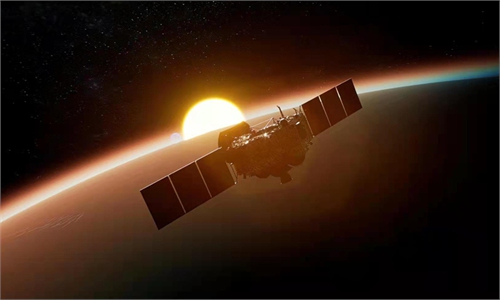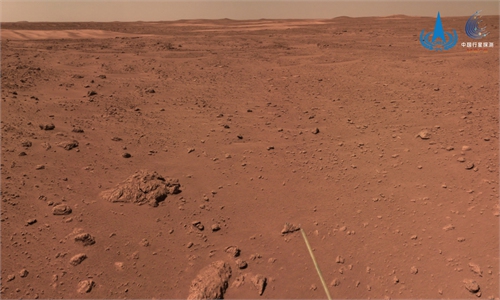China's Mars rover to perform a radio test with ESA's Mars Express after its survival of solar outage

Photo released on June 11, 2021 by the China National Space Administration (CNSA) shows a selfie of China's first Mars rover Zhurong with the landing platform. Photo: CNSA
The Chinese Zhurong Mars rover will perform a radio test with the Mars Express of the European Space Agency (ESA) next month after it survived the almost one-month solar outage.
ESA Operations announced on Wednesday that its Mars Express team is planning a series of five communication tests with the Chinese Zhurong Mars rover in November. Zhurong will transmit data 'blind' as part of a technique designed over a decade ago but not tested in orbit until now. ESA will pass any received data on to the Zhurong team for analysis.
The China Lunar Exploration Project of the China National Space Administration (CNSA), announced on October 22 that the Tianwen-1 Mars orbiter and the Zhurong rover will continue with their scientific exploration after safely passing through a period of solar outage, during which the probe lost contact with Earth and relied on its own smart autonomous systems. The Mars orbiter will enter remote sensing orbit in early November and carry out a remote exploration of the Mars.
Landers and rovers like Zhurong need to get the large volumes of science data they collect back to Earth for analysis. But the equipment they would need to transmit these data directly to Earth from the Martian surface would take up valuable space and mass. To solve this issue, landers and rovers are instead equipped with small, short-range radios.
Similar radios are carried by the spacecrafts orbiting the Mars like the Tianwen-1 Mars orbiter and ESA's Mars Express.
This allows a lander or rover to send its data up to an orbiter which then uses its larger and more powerful transmitter to forward the data across the vast interplanetary distance to Earth. This data relay approach has become the standard for operating rovers and landers on Mars.
Since landing in May, Zhurong has relayed data back to its team using the Chinese Tianwen-1 orbiter. However, it is often useful to explore alternative ways to get its data back to Earth. One common solution is to use the Mars orbiters of other space agencies to provide data relay support such as ESA's Mars Express.
In November, Zhurong will perform a series of five tests to relay data to the Mars Express which will further relay it to ESA's ESOC Operations Centre in Darmstadt, Germany, and then to the Zhurong team.
This is also a chance for the Mars Express team to test a backup method for communicating with Mars landers designed over a decade ago but never before tested live in orbit.
However, due to an incompatibility between the two radio systems, the Zhurong rover cannot receive the frequencies used by Mars Express nor respond to a traditional signal from the spacecraft. Fortunately, it can transmit a frequency compatible with Mars Express.
Zhang Kejian, head of CNSA, said that "China is willing to cooperate with developed countries and major space powers, as well as some developing countries, on international cooperation in space missions," adding that China is willing to share space technologies with other countries to promote global cooperation and development.



